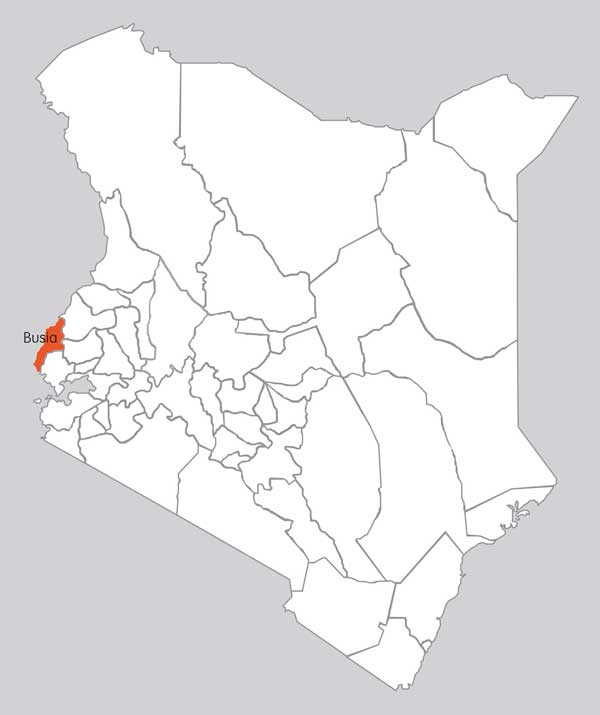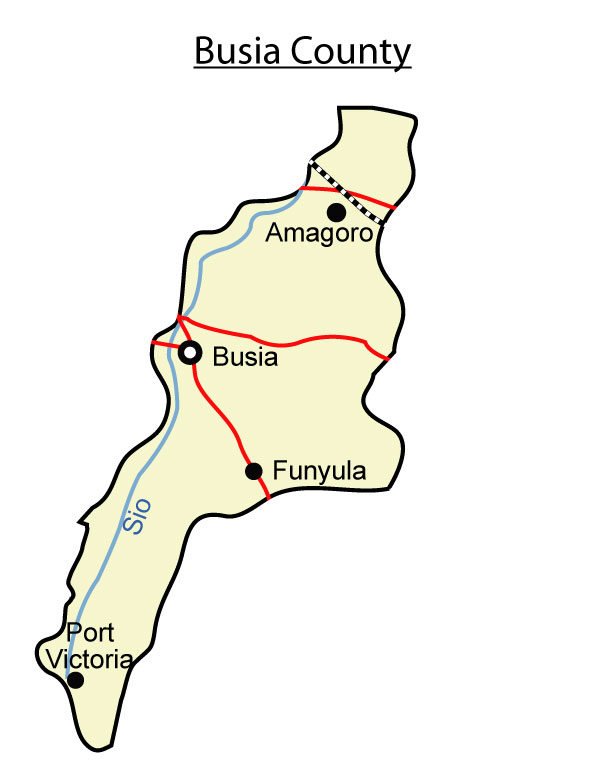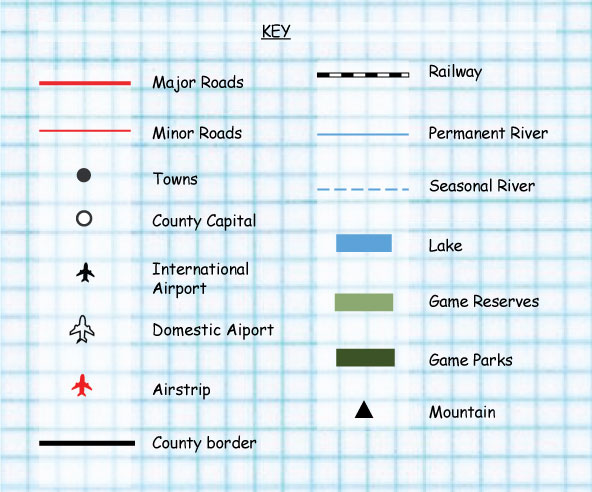Busia is a county in the former Western Province of Kenya. It borders Kakamega County to the east, Bungoma County to the north, Lake Victoria and Siaya County to the south and Busia District, Uganda to the west.



They relied on maize and vegetables. Ugali was was their staple food which at times was served with Chicken.
Luhya men used to wear the prepared skin of a goat or a calf. It was passed under one armpit and fastened with a strap over the opposite shoulder. The skin, hung in this position, was not sufficient to cover the whole body; what the man did was to shift it every time to cover that part of the body which faced the people he was supposed to ‘fear’ (respect). These included mothers-in-law, aunts and all women he called ‘mother’
The women used to wear liboya, made of banana fibres or sisal or, for richer women (abakhaye), of animals’ tail hairs. The liboya was worn round the waist and looked like a kind of apron hanging in front and a tuft of sisal or hair strings hanging behind. It was a very important dress and had to be respected according to custom.
They tied little bells (tsindeke) round their ankles and legs. Many songs for people of all ages and both sexes for all occasions. There were songs for young people of both sexes; others for girls only yet others for boys only. There were songs for women and others for men. The songs can further be subdivided to fit the occasion. For instance, were special songs for weddings – to be sung before, during and after the wedding. There were funeral songs, circumcision songs, and songs for birth of twins.
There were special songs for beer parties, as well as for the special dancing festival called omwimo – separate ones for men and for women. The songs differed slightly from place to place, both in instrumentation words and lyrics.
They had Medicine men and medicine women with a special gifts for this role. The title was hereditatry. They used herbs they gathered to treat varous illnesses.
They name their new born babies according to inherited names, cultural practices, and character. A parent does not choose the name for a child but the child will automatically cry meaning a particular ancestral spirit is disturbing the baby wanting the baby to be named after him/her. When the child cries during the day, it means the ancestor who wants to be named comes from the mother’s side. When the baby cries non-stop at night, it means the ancestor who wants to be named comes from father’s side
Traditional male circumcision is an important ritual in most Luhya sub-tribes. It marks the initiation from boyhood to manhood. The modern and educated Luhyas today choose to circumcise their sons in hospitals upon birth.
It was treated as a ceremony to celebrate a good season. Songs and dances followed, they called them the chiswa harvesting songs.
Naming of children was also dependent on this; children born during a harvest season was called Wekesa for female and Nekesa for the male child.
Music was an important part of the life of the Luhya. Children sing songs and dance for play and (especially boys) when herding livestock. Occasions such as weddings, funerals, and circumcision ceremonies all call for singing and dancing. Musical instruments include drums, jingles, flutes, and accordions. The Luhya are nationally renowned for their energetic and vibrant isukuti dance, a celebratory performance involving rapid squatting and rising accompanied by thunderous, rhythmic drumbeats.
Agriculture-maize, beans, sweet potatoes, millet, cassava, cotton and sugar cane
Fishing
Types of wildlife